The GetDPI Photography Forum
Great to see you here. Join our insightful photographic forum today and start tapping into a huge wealth of photographic knowledge. Completing our simple registration process will allow you to gain access to exclusive content, add your own topics and posts, share your work and connect with other members through your own private inbox! And don’t forget to say hi!
Fujifilm GFX 50R Street Photography
- Thread starter B L
- Start date
faberryman
Member
Looks like Asian wedding photography to me.
ejpeiker
Member
If you actually scroll down to the GFX-50R photos, they are all street genre images.Looks like Asian wedding photography to me.
glenerrolrd
Workshop Member
This did little to convince ...that the GFX 50R was a good choice for street photography . Its possible to use almost any camera to take photographs on the street . Some just work better than others . The primary issues with any MF camera being used for street photography are (1) they are often not fast enough to capture the moment ....shutter lag, viewfinder black out , buffer size for multiple shots and (2) the physically are large and often draw attention on the street . (lens size as well as body ).
And there are so many better choices .
Travel photography is almost an entirely different category and of course the GFX 50R should be great for a mobile kit . The trade off being adjusting to a slower pace to gain a much larger file .
The photographer referenced has some terrific wedding photographs but his street work is not so great .
And there are so many better choices .
Travel photography is almost an entirely different category and of course the GFX 50R should be great for a mobile kit . The trade off being adjusting to a slower pace to gain a much larger file .
The photographer referenced has some terrific wedding photographs but his street work is not so great .
glenerrolrd
Workshop Member
The short videos on the Fuji website under GFX R are just terrific . They clearly show how a R body and the 63MM standard lens can be used for documentary photography . Medium Format has huge advantages when image quality is as major contributor to a photographs success .There are some good street shots on various Fujifilm sites especially where one guy used the 110/2.0 for street portraits.
If I compare the potential of the GFX R against almost 170K images in my LR library ...I could see where it would have worked in about 80% of the situations . AND it could have improved the image quality of about half of the captures . That is a major improvement .
The PRO s (documentary ) are going to gobble this camera up .
The videos quote FAST operation ..hope they are correct ...its a real challenge to build a fast EVF MF camera ..if they did this they will own this segment .
PeterA
Well-known member
I did a fair bit of happy snap street shooting with the XID and 45MM - this one was captured just outside the InterContinental in SanFran when I had a break from meeting schedule - looks nice printed largish because of the detail...

What excited me more was when I started using the XPan crop in viewfinder...here is one from across the street where I live in Sydney - illustrating the XPan view - I am overjoyed to be able to 'see' through the viewfinder the aspect ratio I like to shoot in - rather than cropping after the fact...
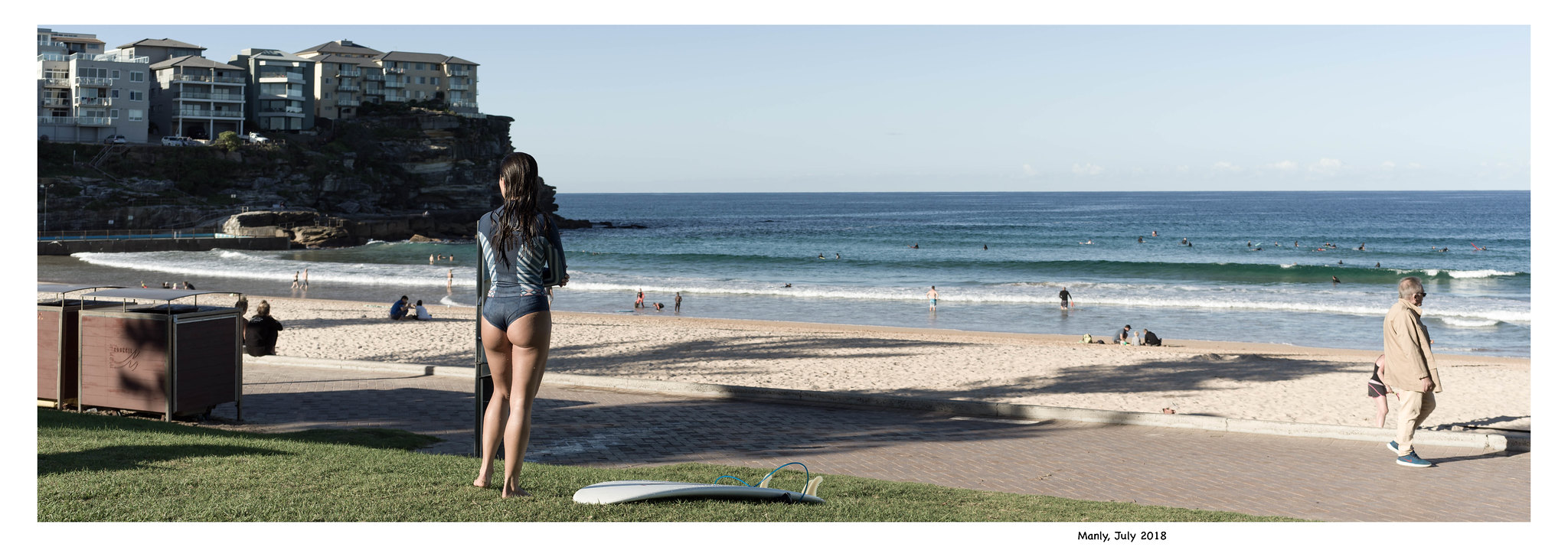
I've since moved to a Fuji GFX50S in anticipation of the 100megpaixel with IBIS |4K 60 etc etc which is coming out next year (I'm already on the list) and am building up lenses for the system - the 100 megapixels will give me 50 megpixels in XPan crop - significantly more elbow room than the 25MP I get from the 50MP sensor now. as an aside , The zoom lens is easily the best zoom I've ever used in MF and better than most I've used in 35mm except for the Leica stuff...the 45MM Fuji for those who may be interested in primes is said to be the best lens they make after the 23mm and 110/2mm here is a snap made with the zoom and GFX50s
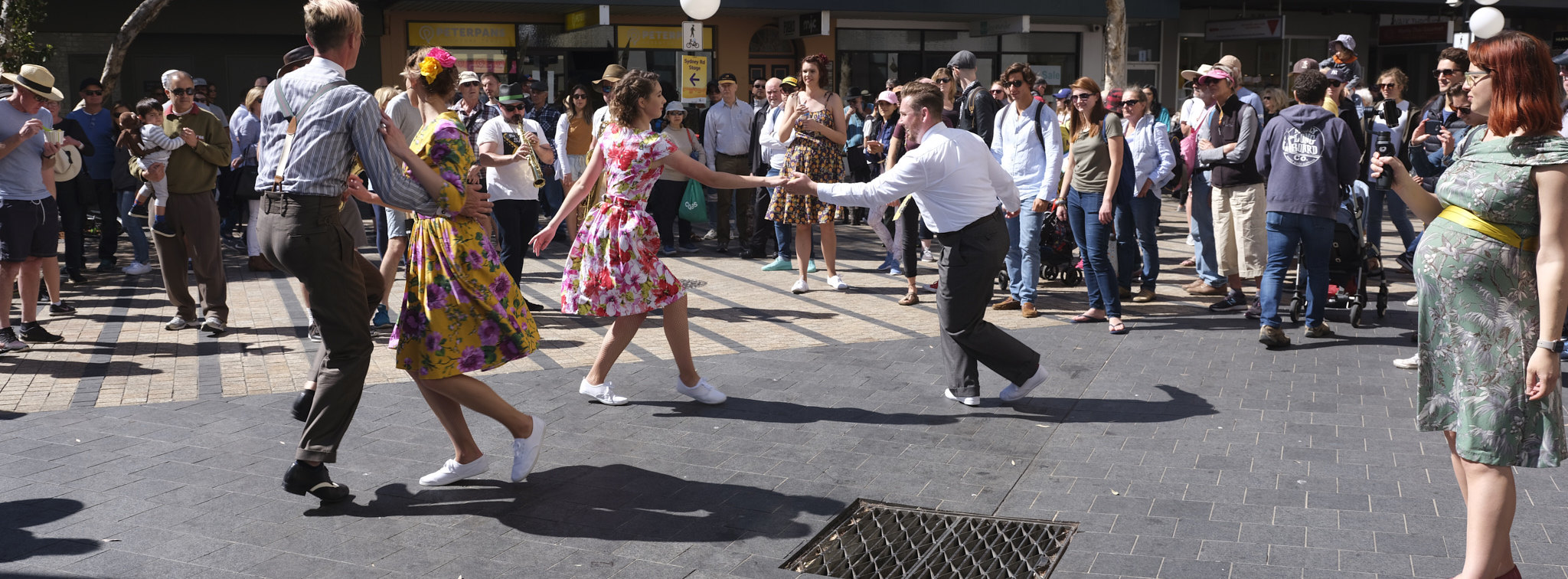
and here is another snap I made showing some thick fog coming in off the ocean and meeting the Norfolk Island Pines which line the walk...

I find the Fuji's focal plane shutter more user friendly for the type of shots I sometimes have to make in Street conditions-much higher shutter speeds available and also a great 'lens' horse if you are so inclined...no reason why one can't use these cameras for Street. Larger MP for me is all about getting a decent amount of 'cropability' in the XPan and cinematic ratios I often like to shoot in. I haven't had the R yet in hand yet - I will report when I test it against the S version for walkaboutability comparison sake- however the S version is a failry light camera - not as ergonomically perfect as the XID - but as light as any high end DSLR is and it has the viewfinder options and tilting screen which some find useful - not to mention the grip...

What excited me more was when I started using the XPan crop in viewfinder...here is one from across the street where I live in Sydney - illustrating the XPan view - I am overjoyed to be able to 'see' through the viewfinder the aspect ratio I like to shoot in - rather than cropping after the fact...

I've since moved to a Fuji GFX50S in anticipation of the 100megpaixel with IBIS |4K 60 etc etc which is coming out next year (I'm already on the list) and am building up lenses for the system - the 100 megapixels will give me 50 megpixels in XPan crop - significantly more elbow room than the 25MP I get from the 50MP sensor now. as an aside , The zoom lens is easily the best zoom I've ever used in MF and better than most I've used in 35mm except for the Leica stuff...the 45MM Fuji for those who may be interested in primes is said to be the best lens they make after the 23mm and 110/2mm here is a snap made with the zoom and GFX50s

and here is another snap I made showing some thick fog coming in off the ocean and meeting the Norfolk Island Pines which line the walk...

I find the Fuji's focal plane shutter more user friendly for the type of shots I sometimes have to make in Street conditions-much higher shutter speeds available and also a great 'lens' horse if you are so inclined...no reason why one can't use these cameras for Street. Larger MP for me is all about getting a decent amount of 'cropability' in the XPan and cinematic ratios I often like to shoot in. I haven't had the R yet in hand yet - I will report when I test it against the S version for walkaboutability comparison sake- however the S version is a failry light camera - not as ergonomically perfect as the XID - but as light as any high end DSLR is and it has the viewfinder options and tilting screen which some find useful - not to mention the grip...
k-hawinkler
Well-known member
Thanks Peter. Interesting.I did a fair bit of happy snap street shooting with the XID and 45MM - this one was captured just outside the InterContinental in SanFran when I had a break from meeting schedule - looks nice printed largish because of the detail...

What excited me more was when I started using the XPan crop in viewfinder...here is one from across the street where I live in Sydney - illustrating the XPan view - I am overjoyed to be able to 'see' through the viewfinder the aspect ratio I like to shoot in - rather than cropping after the fact...

I've since moved to a Fuji GFX50S in anticipation of the 100megpaixel with IBIS |4K 60 etc etc which is coming out next year (I'm already on the list) and am building up lenses for the system - the 100 megapixels will give me 50 megpixels in XPan crop - significantly more elbow room than the 25MP I get from the 50MP sensor now. as an aside , The zoom lens is easily the best zoom I've ever used in MF and better than most I've used in 35mm except for the Leica stuff...the 45MM Fuji for those who may be interested in primes is said to be the best lens they make after the 23mm and 110/2mm here is a snap made with the zoom and GFX50s

and here is another snap I made showing some thick fog coming in off the ocean and meeting the Norfolk Island Pines which line the walk...

I find the Fuji's focal plane shutter more user friendly for the type of shots I sometimes have to make in Street conditions-much higher shutter speeds available and also a great 'lens' horse if you are so inclined...no reason why one can't use these cameras for Street. Larger MP for me is all about getting a decent amount of 'cropability' in the XPan and cinematic ratios I often like to shoot in. I haven't had the R yet in hand yet - I will report when I test it against the S version for walkaboutability comparison sake- however the S version is a failry light camera - not as ergonomically perfect as the XID - but as light as any high end DSLR is and it has the viewfinder options and tilting screen which some find useful - not to mention the grip...
The XPan shots somehow look artificially constrained to me, like looking through a window frame from several feet distance inside a room. My first reaction is what's above or below?
The XPan format certainly focuses the viewer in a very specific way.
For me XPan would be an acquired taste! :grin:
Last edited:
M
mjr
Guest
I like the xpan format for very specific subjects, there are a lot of situations where my vision can't create an image I find compelling or maybe I mean complete, sometimes I feel I'm including a lot, other times I feel I'm missing a lot.
Not a great shot as such a dull flat day but I like the forest in xpan, feels like I'm including rather than excluding in this case.

Not a great shot as such a dull flat day but I like the forest in xpan, feels like I'm including rather than excluding in this case.

Funny how we would approach the same scene with very different thoughts. To me the panoramic formats are all about what's beyond the frame too, which is why I prefer them for compositions with strong vertical lines (forests, city centers etc.). With a panoramic format it is a lot harder to get leading lines and lines that draw the attention back to the center of the frame (sometimes a branch to draw the eye from one end of the frame to the other). With a 5:4 or 4:3 ratio I try to tell the whole story within the frame and my composition usually has multiple elements and I usually keep searching until the whole frame is filled. With a more panoramic ratio, my composition usually is much simpler (either two or three contrasting separate parts or like you demonstrate, one cut out, without a very strong leading line) and could be seen more as a texture than a story, to point out one aspect of a bigger scene.I like the xpan format for very specific subjects, there are a lot of situations where my vision can't create an image I find compelling or maybe I mean complete, sometimes I feel I'm including a lot, other times I feel I'm missing a lot.
Not a great shot as such a dull flat day but I like the forest in xpan, feels like I'm including rather than excluding in this case.

PeterA
Well-known member
Interesting observation KH ! about the 'like looking through a window frame' - and the question 'what is above or below'? ....Thanks Peter. Interesting.
The XPan shots somehow look artificially constrained to me, like looking through a window frame from several feet distance inside a room. My first reaction is what's above or below?
The XPan format certainly focuses the viewer in a very specific way.
For me XPan would be an acquired taste! :grin:
but can't we make the same observation about any aspect ratio really? -
anyway - my main use of the XPan view or Linhoff view or Widelux view is street/reportage and editorial type work..
as Matt shows above you can offset teh horisontal with strong verticals as a composiitonal strategy in landscape to good effect..but I am not a landscape shooter.
I'll have to have a think about whatyou have said JeRuFo.
Last edited:
PeterA
Well-known member
what a great observation!Some of Degas's Paris street and ballet paintings were done in that aspect ratio and boy did he come up with some amazing compositions within the frame.
as to KH's response to some snaps ..
there is an 'element' of vouyeursim in any photograph with people in it - the 'look through window' effect is present whenever the photographer by choice of lens or distance from subject(s) is at a distance - why telephoto lenses are not favoured in street or people shots - they focus too tight and remove too much context..but then again every viewer brings their own perspective to their viewing..
I am re-familiarsing myself with the aspect ratio using megapixel sizes not available 20 years ago and certainly not as easy to employ hand held as they are today...and having fun doing it -
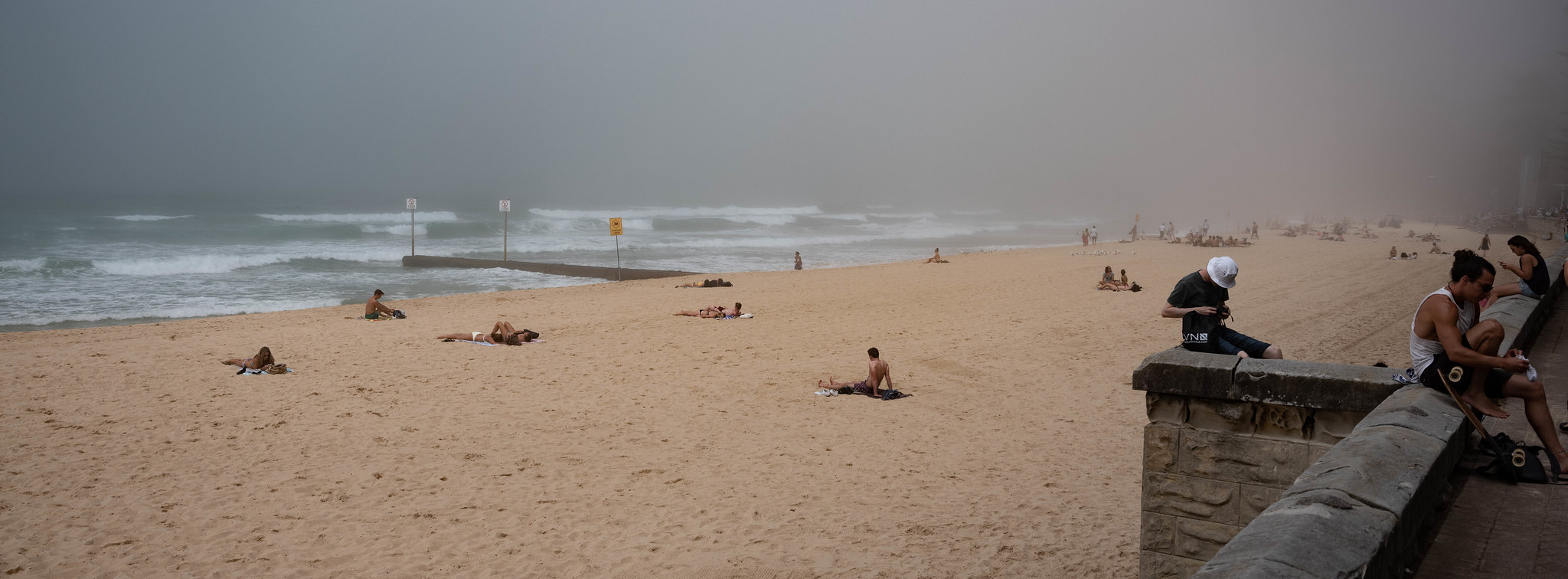
Shashin
Well-known member
The only photographer I think that has done some very good work with a 3:1 panoramic camera is Josef Koudelka. I prefer 2:1 panoramic formats--my favorite camera was the Horseman SW612 (I also used a Widelux). But you need a wide to make it work--a focal length matching the height of the format. A 55mm is great on a 6x12 camera. But panoramic formats take some getting used to to get work beyond the novelty of the format.
PeterA
Well-known member
I'd be interested to see an example of what you think is 'very good work' Will. Interesting comment on the requirement of focal length matcvhing the height of the format - I used an XPan with its three lenses 30mm/45 and 90 and each was perfectly capable of making panoramic shots and none of them satisfies your 'rules'. A lot of landscape photograhers have shopt with panoramic formats including XPan but more widely Lionhoff Technica. I'm not a huge devotee of ARAT photography and can only muster enough enthusiasm for a well executed shot as the next guy - still a lot of impressive landscape work has been done very well in greater than 2:1 - as for panoramic typical shots 'work' it isn't a common format for typical work as it doesn't fit typical commercial uses - then agaiun neither do any of the standard chip sizes anyway.The only photographer I think that has done some very good work with a 3:1 panoramic camera is Josef Koudelka. I prefer 2:1 panoramic formats--my favorite camera was the Horseman SW612 (I also used a Widelux). But you need a wide to make it work--a focal length matching the height of the format. A 55mm is great on a 6x12 camera. But panoramic formats take some getting used to to get work beyond the novelty of the format.
Anyway I gues sthe discussion is now well off topic since the thread is about the Fuji R anyway
Shashin
Well-known member
I was really talking about my preferences toward 2:1 panoramic cameras and experience with them. Here are a few images documenting a Japanese festival (since we are on the subject of street photography):I'd be interested to see an example of what you think is 'very good work' Will. Interesting comment on the requirement of focal length matcvhing the height of the format - I used an XPan with its three lenses 30mm/45 and 90 and each was perfectly capable of making panoramic shots and none of them satisfies your 'rules'. A lot of landscape photograhers have shopt with panoramic formats including XPan but more widely Lionhoff Technica. I'm not a huge devotee of ARAT photography and can only muster enough enthusiasm for a well executed shot as the next guy - still a lot of impressive landscape work has been done very well in greater than 2:1 - as for panoramic typical shots 'work' it isn't a common format for typical work as it doesn't fit typical commercial uses - then agaiun neither do any of the standard chip sizes anyway.
Anyway I guess sthe discussion is now well off topic since the thread is about the Fuji R anyway
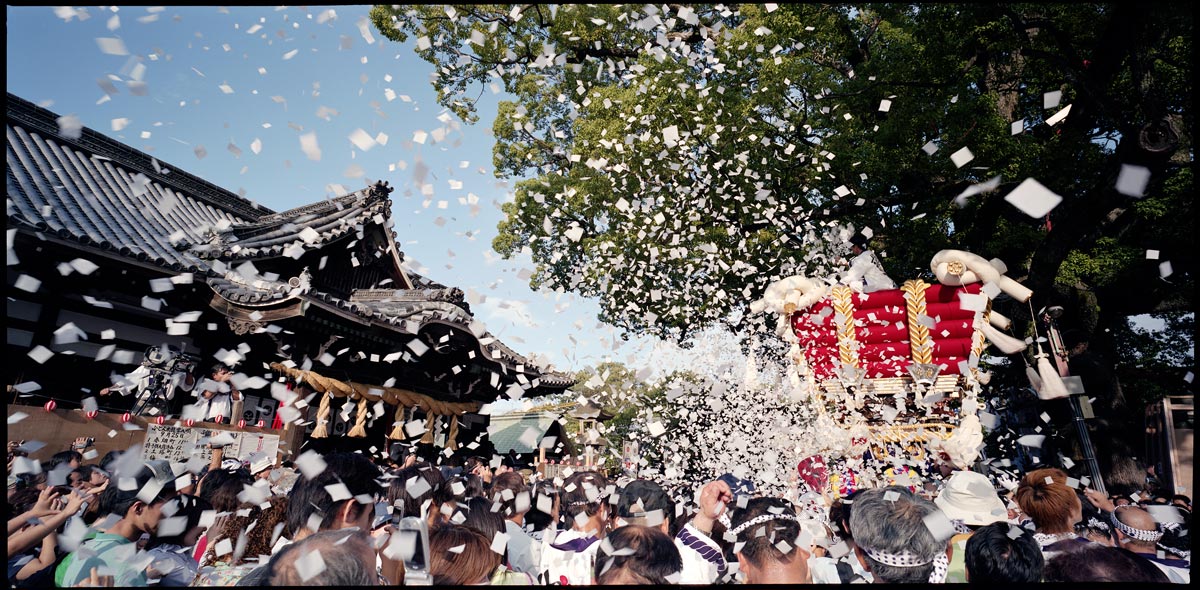
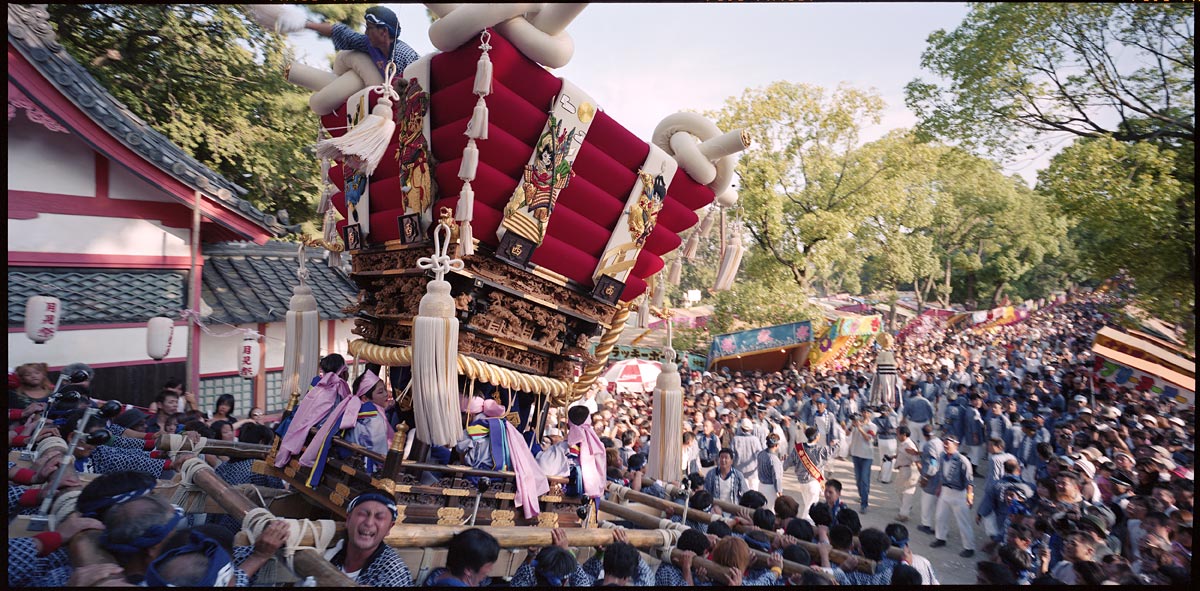
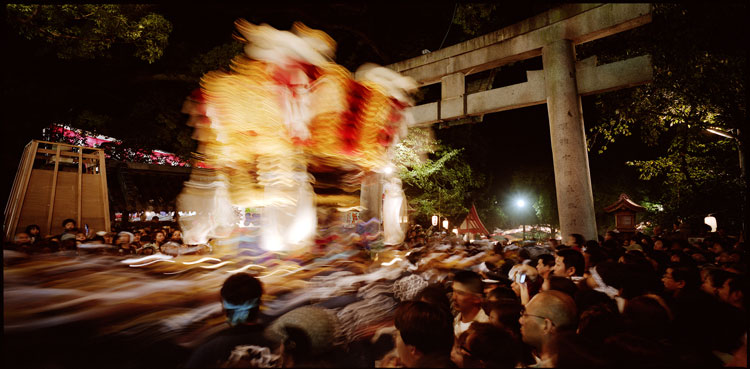
Josef Koudelka Chaos work illustrates someone that has really worked with the 3:1 format and used it very creatively. People may not personally like it, but for panoramic work it stands out.
https://pro.magnumphotos.com/C.aspx?VP3=SearchResult&ALID=2TYRYDI3YAVZ
PeterA
Well-known member
Nice shots capturing the feel of the festival there Will!
as for the Magnum photographer - thanks for refreshing my memory - the B&W underlines the severity of his doco style and subject matter- there are lessons in composition there for anyone who cares to explore composing wide his assylum shot with people in it is very powerful Then again - my interest is in scenes with people in them - takes a lot for me to cop another B&W abstract composition as something of great interest - I suppose that is why I am going to persevere with wide- excellent at capturing both context and lots of people doing lots of things all at the same time...
atb
Pete
as for the Magnum photographer - thanks for refreshing my memory - the B&W underlines the severity of his doco style and subject matter- there are lessons in composition there for anyone who cares to explore composing wide his assylum shot with people in it is very powerful Then again - my interest is in scenes with people in them - takes a lot for me to cop another B&W abstract composition as something of great interest - I suppose that is why I am going to persevere with wide- excellent at capturing both context and lots of people doing lots of things all at the same time...
atb
Pete
M
mjr
Guest
Thanks for posting that link Will, not heard of Josef Koudelka before but really interesting stuff.Josef Koudelka Chaos work illustrates someone that has really worked with the 3:1 format and used it very creatively. People may not personally like it, but for panoramic work it stands out.
https://pro.magnumphotos.com/C.aspx?VP3=SearchResult&ALID=2TYRYDI3YAVZ
Mat
Shashin
Well-known member
He is more known for black and white 35mm film documentary photography of the Roma in Europe. That is powerful work. His panorama work came after that.Thanks for posting that link Will, not heard of Josef Koudelka before but really interesting stuff.
Mat
